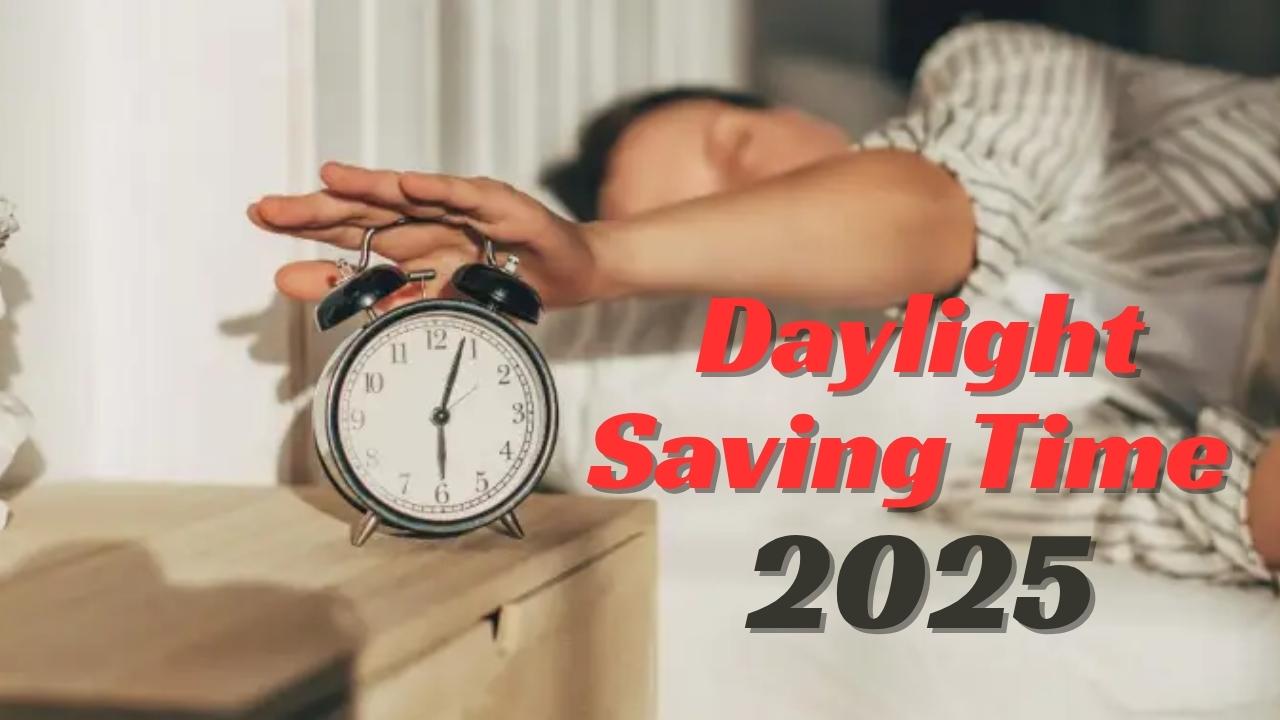On Sunday, 2 November 2025, Americans will once again “fall back” as Daylight Saving Time (DST) comes to an end. At 2:00 AM, clocks will move back one hour; giving most people an extra sixty minutes of sleep. But experts say this annual adjustment does far more than alter the time; it also influences how well we rest, how safely we drive, and how much energy we use.
Public agencies and sleep specialists alike are encouraging citizens to prepare in advance for this subtle but meaningful shift. As per reports, the experts and federal agencies are already urging households to plan ahead, noting that even one hour’s difference can matter in many ways. Grab more about it, by reading the post below.
Daylight Saving Time 2025
As the nation prepares to turn back the clock on 2, November 2025, experts remind Americans that one extra hour can ripple through sleep patterns, safety habits, and even monthly energy costs.
The end of Daylight Saving Time may feel routine, but researchers say the sudden shift still disrupts circadian rhythms, fueling fatigue, mood dips, and slower reaction times across the week ahead.
Safety agencies are urging evening commuters to stay alert as earlier sunsets darken roads. Drowsy driving accidents typically rise after the clock change, making awareness and rest key to saving lives.
Meanwhile, the Sunshine Protection Act is sparking fresh debate about whether America should stop changing clocks altogether. For now, a little preparation and plenty of sleep; remain the nation’s best defense.
Daylight Saving Time 2025 Quick Overview
| Update On | Daylight Saving Time 2025 & Affects |
| DST Ends | 2 November 2025, Sunday |
| Clock Change | Turn back one hour |
| Time Switch Moment | 2:00 A.M. → 1:00 A.M. |
| Main Purpose | Align daylight, save energy |
| Legal Basis | Energy Policy Act of 2005 |
| Non-Observing Areas | Hawaii, Arizona, U.S. territories |
| Morning Benefit | Brighter dawn, earlier sunlight |
| Evening Trade-off | Darker commutes, early sunsets |
| Sleep Impact | Temporary rhythm disruption |
| Health Tip | Adjust bedtime gradually |
| Safety Focus | Watch roads at dusk |
| Energy Note | Savings now mostly minimal |
| Debate Status | Sunshine Protection Act pending |
| Preparation Step | Reset clocks, check alarms |
| Final Takeaway | One hour, big nationwide impact |
What Happens During Daylight Saving Time 2025?
In the United States, Daylight Saving Time (DST) is the period during which clocks are advanced by one hour relative to Standard Time, so as to shift daylight later into evening hours. The current schedule is governed by the Energy Policy Act of 2005, which extended DST’s duration. Under that law, DST now begins on the second Sunday in March and ends on the first Sunday in November.
When DST ends, clocks are turned back one hour (from 2:00 AM back to 1:00 AM), returning the country to Standard Time. The intended purpose is to better align daylight hours with human activities, reducing the need for artificial lighting in evenings and thus saving energy.
Timing & States Observing DST
Below is a simple reference showing when the 2025 shift occurs and which U.S. regions do not take part –
| Category | Details |
| End Date & Time | Sunday, 2 November 2025, at 2:00 A.M. local time |
| Clock Change | Set clocks back one hour (2:00 A.M. → 1:00 A.M.) |
| Areas Not Observing DST | Hawaii, most of Arizona (except Navajo Nation), and U.S. territories such as Puerto Rico, Guam, American Samoa, U.S. Virgin Islands, and Northern Mariana Islands |
| Federal Framework | Governed by the Uniform Time Act (1966) & extended through the Energy Policy Act of 2005 |
How One Hour Affects Your Sleep?
Although the fall transition is usually easier than the spring “jump ahead,” it still disrupts the body’s natural timing. Our circadian rhythm, which depends on light cues, can take a few days to recalibrate.
After the change, people often notice temporary fatigue, grogginess, or changes in alertness. Early sunsets may also reduce exposure to daylight, making it harder for some to maintain a steady sleep-wake cycle. Here’s a practical guide to making the adjustment smoother –
| Sleep Tip | What to Do | Why It Helps |
|---|---|---|
| Shift Gradually | Go to bed 10-15 minutes earlier in the days before the time change | Allows your body clock to adapt gently |
| Seek Morning Sunlight | Step outdoors shortly after waking | Reinforces your new internal rhythm |
| Keep Routine Steady | Maintain consistent wake and bed times | Prevents prolonged disruption |
| Limit Late Screens | Turn off phones and TVs an hour before bed | Reduces blue-light impact on melatonin |
| Use Short Naps Wisely | Nap no more than 30 minutes before mid-afternoon | Eases tiredness without delaying sleep onset |
By the middle of the week, most people regain normal rest patterns and daytime alertness.
Safety & Road Awareness
The return to Standard Time also reshapes daily visibility, especially for commuters driving home in darker conditions. Safety experts warn that the mix of reduced daylight and mild sleep disruption can elevate certain risks.
Research from transportation and health agencies highlights a few consistent findings –
- Drowsy Driving Risk – Even slight sleep loss impairs focus and slows reaction time.
- Evening Visibility – The sudden arrival of early darkness can catch drivers off guard.
- Crash patterns – Studies show accident numbers can shift right after the time change, especially during twilight hours.
Simple Safety Measures –
- Turn headlights on earlier in the evening.
- Double-check brake lights and turn signals.
- Allow extra travel time to avoid rushing.
- Stay alert for pedestrians, cyclists, and children near schools or crosswalks.
- Avoid driving when feeling fatigued or distracted.
How DST Influences Energy Bills?
When DST was created, its purpose was to conserve power by extending daylight later into the evening. But in modern households, that logic doesn’t always hold true. Today’s energy use is driven less by lighting and more by heating, cooling, and electronics.
What Studies Show?
Recent analyses suggest DST saves little, sometimes even increases total energy use; because people run air conditioners longer on warm evenings and heat their homes more on dark mornings. The effect varies widely by state, climate, and household behavior.
How to Save Energy This Season?
- Upgrade lighting – Switch to LED bulbs; they use up to 75% less electricity.
- Seal heat leaks – Insulate windows and doors to keep warmth in.
- Use smart thermostats – Automate temperature settings to match sleeping hours.
- Unplug unused gadgets – Many electronics draw power even when off.
- Open curtains early – Take advantage of free daylight to warm rooms naturally.
Small steps like these can offset any energy increases caused by schedule changes.
Regional Exceptions & Ongoing Debate
Not all parts of the United States observe Daylight Saving Time. Hawaii and most of Arizona have opted out for decades, citing minimal benefit given their consistent daylight patterns. The same applies to several U.S. territories including Puerto Rico, Guam, and American Samoa.
Meanwhile, the national debate continues. The Sunshine Protection Act, a proposal to make DST permanent, has seen strong public interest but remains stalled in Congress. Supporters argue permanent daylight hours could improve public safety and outdoor recreation, while opponents warn it could lead to darker winter mornings and sleep-health concerns. Until lawmakers act, Americans will continue switching clocks twice a year.
Best Practices For a Smooth Transition
Here’s a quick reminder list for a stress-free time change –
- Modify your sleep schedule slightly in the days ahead.
- Check smoke alarms and carbon monoxide detectors while you are at it.
- Ensure outdoor lights and car headlights work properly.
- Expose yourself to daylight in the morning to reset your rhythm.
- Revisit thermostat and timer settings for the colder months.
Fall Back 2025: What One Hour Really Does?
Daylight Saving Time may only shift the clock by one hour, but its effects extend far beyond the face of a watch. From disrupted sleep to evening visibility and changing power habits, that small difference can shape how Americans feel and function as winter approaches.
When 2nd November 2025 arrives, resetting your clock will take only a few seconds but a little foresight can help your body, your safety, and your energy bill adjust just as smoothly.











